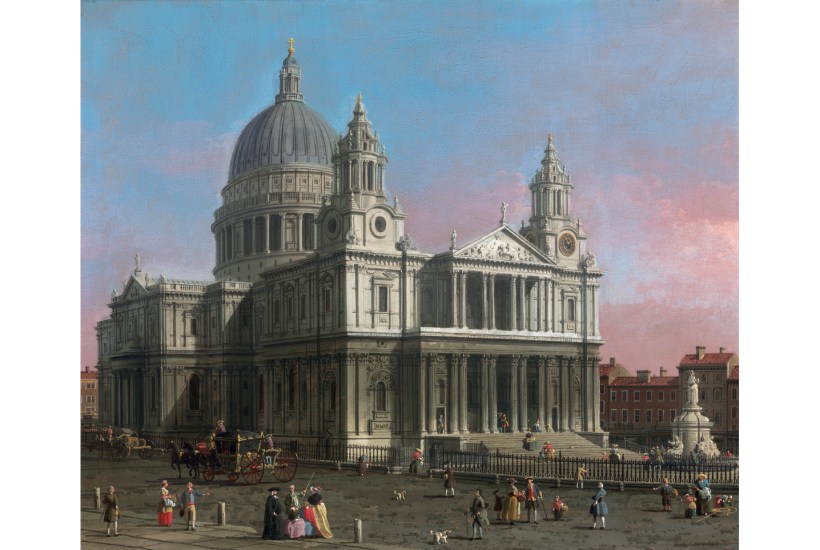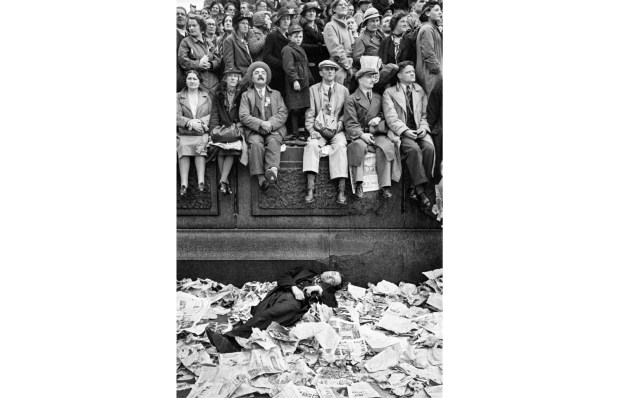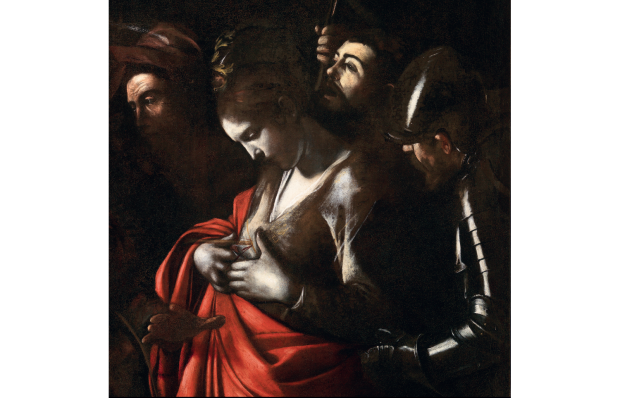When Sir Christopher Wren’s servant went to rouse his master from an afternoon nap on 25 February 1723, and found that the old man would never wake again, the reputation of the nation’s greatest architect was already on the wane. He had walked away from St Paul’s in a fit of pique, with the cathedral still unfinished. He had been sacked from the royal post he held for nearly half a century, the surveyor-generalship of the king’s works. And the tide of taste was turning against his brand of restrained baroque in favour of a more rigid Palladianism. In old age he used to grumble that he wished he had stuck to medicine, one of his early interests, instead of dabbling in architecture: then he would have made some real money, he said.
For 100 years after his death Wren’s reputation was caught in limbo between a medieval past and a neoclassical present, his architecture neither picturesque enough for the antiquarians nor scholarly enough for the moderns. In the early 19th century, however, when even the classicists were beginning to tire of dull good manners and Adametic elegance, Wren found a champion in Charles Robert Cockerell, who succeeded to the surveyorship of St Paul’s in 1819. Cockerell developed an unfashionable attachment to the English baroque in general and to Wren in particular: St Paul’s was ‘without a rival in beauty, unity and variety’, St Stephen Walbrook a ‘bubble of unexampled lightness which has stood more than 150 years and not yet blown away’.
Cockerell’s ‘Tribute to the Memory of Sir Christopher Wren’ (1838) was a wonderful capriccio in which he brought Wren’s most famous works (and a few that we now know weren’t his at all) into a single, magical landscape. The Sheldonian rubbed shoulders with the library at Trinity; the Monument towered over Greenwich Observatory and Chelsea Hospital; and almost lost in the clouds, the majestic dome of St Paul’s looked down on Winchester Palace and 33 City churches. The ‘Tribute’, which was engraved and widely distributed, concentrated early Victorian minds on Wren’s monumental contribution to English architecture. It dared the establishment to deny that Wren was one of the most gifted architects in the nation’s history.
Wren’s rehabilitation was helped by the fact that St Paul’s was vying with Westminster Abbey as a shrine to national heroes, and steadily filling up with enormous monuments of varying quality to famous (and not-so-famous) military and naval figures: Nelson was buried there in 1806, and the Duke of Wellington in 1852. In an increasingly imperialistic age, the panoply of state funerals and statuary contributed to the cathedral’s absorption into British culture and, by association, it enhanced its creator’s reputation. Lord Macaulay reckoned that in architecture, ‘our country could boast of one truly great man, Christopher Wren’, and declared that ‘even the superb Louis [XIV] has left to posterity no work which can bear a comparison with St Paul’s’. Nor was the reappraisal confined to the cathedral: Cockerell’s ‘Tribute’ so inspired John Clayton, an 18-year-old pupil of his at the Royal Academy, that he spent ten years making measured drawings of all Wren’s City churches; the results were published, with a dedication to Cockerell, in 1848. And in a quintessentially Victorian aphorism, Thomas Carlyle decided that Chelsea Hospital was obviously built by a gentleman – the highest praise imaginable.
Just when it seemed that Wren’s reputation was secure, however, the Gothic Revival, with its obsession with morality and medievalism, began to fight back. Pugin dismissed English baroque as degenerate and announced that St Paul’s was a meagre imitation of Italian paganism. John Ruskin sneered at St Paul’s and deplored the English Renaissance (the entire Renaissance, in fact) as a regrettable lapse after the sublime purity of the Gothic.
But interest soon began to stir again with the appearance of A.H. Mackmurdo’s Wren’s City Churches (1883), which applied a fresh new design vocabulary to the Queen Anne or ‘Free Classic’ style. Then in 1897 Reginald Blomfield published his History of Renaissance Architecture in England, full of praise for ‘the most English of all English architects’, in whose work he found ‘a singularly direct and unaffected method of expression… pre-eminently English in its sober power’. Country houses began to appear which borrowed heavily and very freely from Wren: Richard Norman Shaw’s Bryanston in Dorset; Lutyens’s Great Maytham and Blomfield’s own Moundsmere Manor in Hampshire.
This so-called Wrenaissance confirmed its namesake’s status in the public imagination as the English architect. Where the Palladians had condemned Wren for breaking the rules, the Wrenaissance praised him for it. Blomfield’s assessment of him as the archetype of good honest practicality, ‘free from pedantry and foolishness’, recurs throughout the writings of early 20th-century critics. ‘One is inclined to think it as well, on the whole, that Wren did not go to Italy,’ said one. St Paul’s ‘is prodigiously English’, wrote another. J. A. Gotch talked of Wren’s ‘splendid common-sense’ and, referring to Palladian rules of art, claimed that: ‘Wren was too powerful a genius, too much occupied in solving constructional problems, to become their slave.’
The deification of ‘the most English of all English architects’ reached a peak with the bicentenary of 1923. The commemoration service at St Paul’s was a grand affair, attended by the Bishop of London, the Lord Mayor and Sheriffs and a bevy of establishment figures. The Dean took his text for the occasion from Haggai, 2, 9: ‘The glory of this latter house shall be greater than the glory of the former, saith the Lord.’ After the service was over, an international deputation of architects went down into the crypt to lay wreaths on Wren’s tomb. The young Aldous Huxley celebrated the bicentenary with an eccentric essay in which he reinvented Wren as a character from the Forsyte Saga – ‘a gentleman, the finished product of an old and ordered civilisation’.
One consequence of the celebrations was a heightened appreciation for Wren’s City churches – those that were left, anyway. Eighteen had already been demolished. St Christopher-le-Stocks was pulled down in 1782-4, after the governor of the Bank of England persuaded parliament that insurrectionists might use it to launch an assault on the bank. Over the next 60 years, road-widening and improvement schemes accounted for St Michael Crooked Lane, St Bartholomew-by-the-Exchange and St Benet Fink. But the biggest threat came from within. The Anglican authorities had been struggling with the problem of a declining residential population in the City of London for decades; and the 1860 Union of Benefices Act, which gave the church powers to amalgamate parishes and demolish redundant buildings, paved the way for 13 more casualties between 1867 (St Benet Gracechurch) and 1904 (St George Botolph Lane).
German bombers did even more damage than the Church of England. Twenty-two of Wren’s churches were ruined during the second world war. Nine were hit on a single night. But if anything, the Blitz only served to strengthen his hold on the public imagination. Herbert Mason’s famous image of a miraculously preserved St Paul’s, swathed in smoke and surrounded by ruins and rubble, became a potent symbol of defiance and salvation. Bloody but unbowed, it was a sign that God was on our side.
Thirteen of the damaged City churches were restored: it was unthinkable that buildings of the stature of St Stephen Walbrook, St James Piccadilly and St Mary-le-Bow should be bulldozed and forgotten. But it was the cathedral, by now inextricably bound up in the national consciousness, which kept Wren’s memory green. When in 1951 George VI launched the Festival of Britain as a ‘corporate re-affirmation of faith in the nation’s future’, he launched it at St Paul’s. When Charles, Prince of Wales and Lady Diana Spencer made their ill-fated match 30 years later, millions of people across the globe watched the fairy tale unfold at St Paul’s. And when in 1987 Prince Charles gave his famous Mansion House speech attacking modern architecture, Wren’s cathedral was the springboard for his vision of the City: ‘I would like to see a roofscape that gives the impression that St. Paul’s is floating above it like a great ship on the sea,’ he said.
Judged by his own standards, Sir Christopher Wren was a failure. The schemes that mattered most to him – a new capital after the fire of 1666, his early designs for St Paul’s as a great basilica, new royal palaces at Winchester, Hampton Court and Whitehall – all foundered on the rocks of reality. But if failure means Hampton Court and St Paul’s, the wonder of Trinity College Library and the bubble of unexampled lightness that is St Stephen Walbrook, then we need more failures.
Wren changed the face of England and the course of architectural history. If you doubt it, then seek his monuments. Look around.
Got something to add? Join the discussion and comment below.
Get 10 issues for just $10
Subscribe to The Spectator Australia today for the next 10 magazine issues, plus full online access, for just $10.
You might disagree with half of it, but you’ll enjoy reading all of it. Try your first month for free, then just $2 a week for the remainder of your first year.














Comments
Don't miss out
Join the conversation with other Spectator Australia readers. Subscribe to leave a comment.
SUBSCRIBEAlready a subscriber? Log in